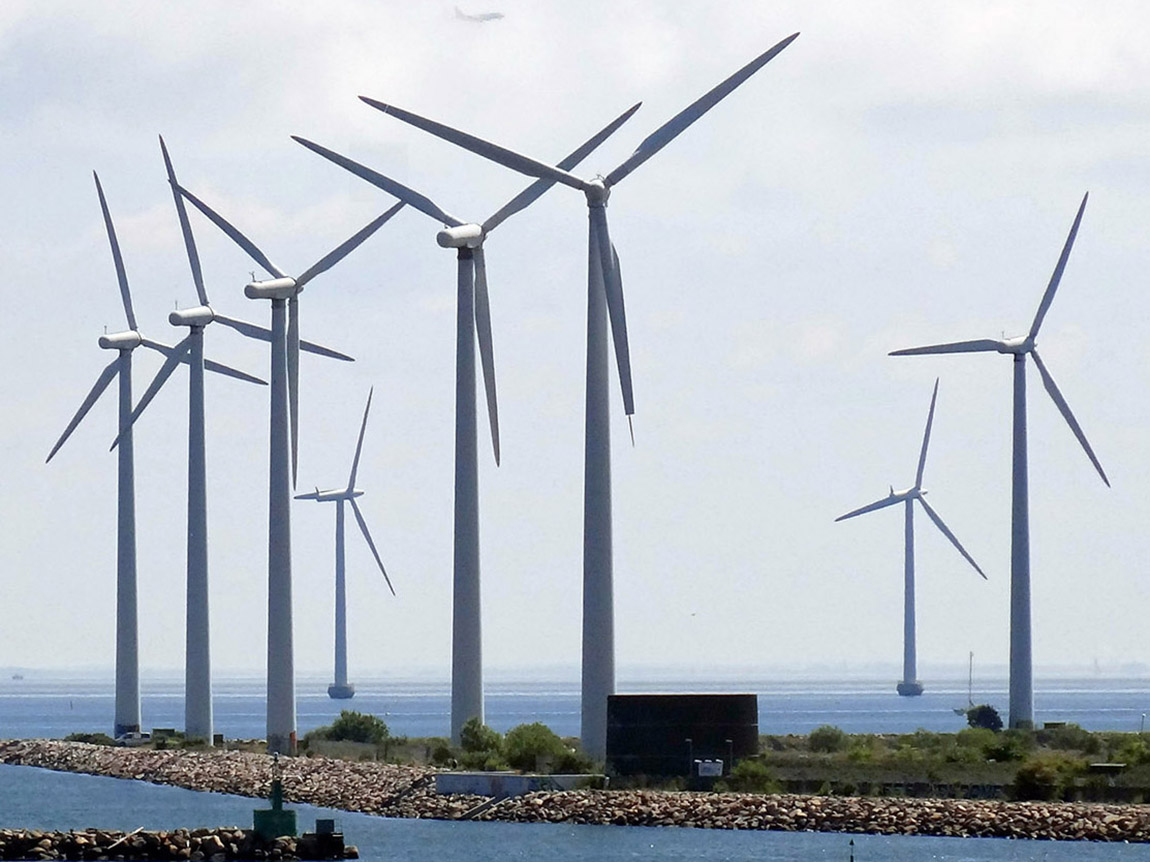 The Clean Energy Bill has been on the agenda for some time and not just in the UK. With climate change an ever growing global concern, investment in other cleaner energy sources has been essential. However, when it comes to investment in wind farms, developers have faced significant opposition. The balancing act for the government appears to be generating sufficient investment in wind farms, while minimising the negative externalities.
The Clean Energy Bill has been on the agenda for some time and not just in the UK. With climate change an ever growing global concern, investment in other cleaner energy sources has been essential. However, when it comes to investment in wind farms, developers have faced significant opposition. The balancing act for the government appears to be generating sufficient investment in wind farms, while minimising the negative externalities.
The phrase often thrown around with regards to wind farms, seems to be ‘not in my backyard’. That is, people recognise the need for them, but don’t want them to be built in the local areas. The reason is to do with the negative externalities. Not only are the wind farms several metres high and wide, creating a blight on the landscape, but they also create a noise, both of which impose a third party effect on the local communities. These factors, amongst others, have led to numerous protests whenever a new wind farm is suggested. The problem has been that with such challenging targets for energy, wind farms are essential and thus government regulation has been able to over-ride the protests of local communities.
However, planning guidance in the UK will now be changed to give local opposition the ability to override national energy targets. In some sense, more weight is being given to the negative externalities associated with a new wind farm. This doesn’t mean that the government is unwilling to let investment in wind farms stop. Instead, incentives are being used to try to encourage local communities to accept new wind farms. While acknowledging the existence of negative externalities, the government is perhaps trying to put a value on them. The benefits offered to local communities by developers will increase by a factor of five, thus aiming to compensate those affected accordingly. Unsurprisingly, there have been mixed opinions, summed up by Maria McCaffery, the Chief Executive of trade association RenewableUK:
Maria McCaffery, chief executive of trade association RenewableUK, said the proposals would signal the end of many planned developments and that was “disappointing”.
Developing wind farms requires a significant amount of investment to be made upfront. Adding to this cost, by following the government’s advice that we should pay substantially more into community funds for future projects, will unfortunately make some planned wind energy developments uneconomic in England.
That said, we recognise the need to ensure good practice across the industry and will continue to work with government and local authorities to benefit communities right across the country which are hosting our clean energy future.
The improved benefits package by the energy industry is expected to be in place towards the end of the year. The idea is that with greater use of wind farms, energy bills can be subsidised, thereby reducing the cost of living. Investment in wind farms (on-shore and off-shore) is essential. Current energy sources are non-renewable and as such new energy sources must be developed. However, many are focused on the short term cost and not the long term benefit that such investment will bring. The public appears to be in favour of investment in new energy sources, especially with the prospect of subsidised energy bills – but this positive outlook soon turns into protest when the developers pick ‘your back yard’ as the next site. The following articles consider this issue.
Residents to get more say over wind farms The Guardian, Fiona Harvey and Peter Walker (6/6/13)
Local communities offered more say over wind farms BBC News (6/6/13)
Locals to get veto power over wind farms The Telegraph, Robert Winnett (6/6/13)
Wind farms are a ‘complete scam’, claims the Environment Secretary who says turbines are causing ‘huge unhappiness’ Mail Online, Matt Chorley (7/6/13)
New planning guidance will make it harder to build wind farms Financial Times, Jim Pickard, Pilita Clark and Elizabeth Rigby (6/6/13)
Will more power to nimbys be the death of wind farms? Channel 4 News (6/6/13)
Locals given more ground to block wind farms Independent, Tom Bawden (6/6/13)
Questions
- What are the negative externalities associated with wind farms?
- Conduct a cost-benefit analysis as to whether a wind farm should be constructed in your local area. Which factors have you given greatest weight to?
- In question 2 above, were you concerned about the Pareto criterion or the Hicks-Kaldor criterion?
- If local communities can be compensated sufficiently, should wind farms go ahead?
- If the added cost to the development of wind farms means that some will no longer go ahead, is this efficient?
- Why is there a need to invest in new energy sources?
- To what extent is climate change a global problem requiring international (and not national) solution?
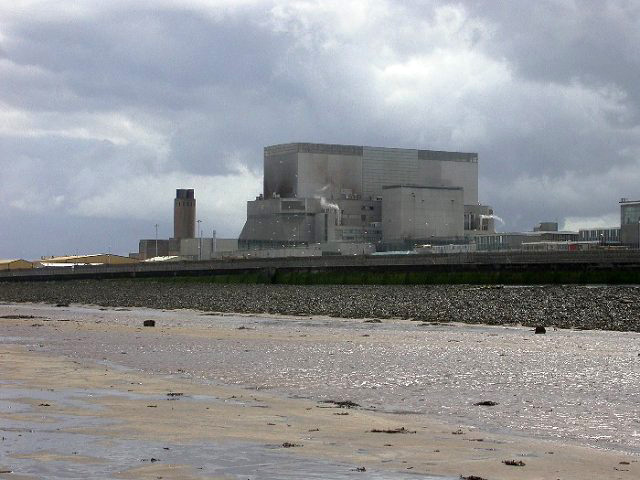 The UK government has just given the go-ahead for the building of two new nuclear reactors at Hinkley Point in Somerset. The contract to build and run the power station will go to EDF, the French energy company.
The UK government has just given the go-ahead for the building of two new nuclear reactors at Hinkley Point in Somerset. The contract to build and run the power station will go to EDF, the French energy company.
The power station is estimated to cost some £14 billion to build. It would produce around 7% of the UK’s electricity. Currently the 16 nuclear reactors in the UK produce around 19%. But all except for Sizewell B in Suffolk are due to close by 2023, although the lives of some could be extended. There is thus a considerable energy gap to fill in the coming years.
Several new nuclear power stations were being considered to help fill this gap, but with rising capital costs, especially following the Fukushima disaster in Japan, potential investors pulled out of other negotiations. Hinkley Point is the only proposal left. It’s not surprising that the government wants it to go ahead.
All that remains to agree is the price that EDF can charge for the electricity generated from the power station. This price, known as the ‘strike price’, is a government-guaranteed price over the long term. EDF is seeking a 40-year deal. Some low carbon power stations, such as nuclear and offshore wind and wave power stations, have high capital costs. The idea of the strike price is to reduce the risks of the investment and make it easier for energy companies to estimate the likely return on capital.
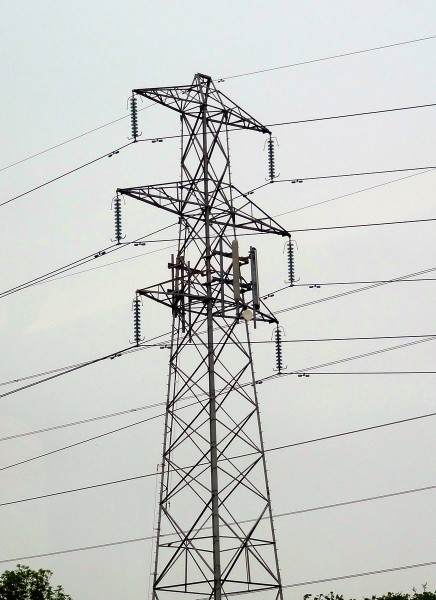 But the strike price, which will probably be agreed at around £95 per megawatt hour (MWh), is roughly double the current wholesale price of electricity. EDF want a price of around £100 per MWh, which is estimated to give a return on capital of around 10%. The government was hoping to agree on a price nearer to £80 per MWh. Either way, this will require a huge future subsidy on the electricity generated from the plant.
But the strike price, which will probably be agreed at around £95 per megawatt hour (MWh), is roughly double the current wholesale price of electricity. EDF want a price of around £100 per MWh, which is estimated to give a return on capital of around 10%. The government was hoping to agree on a price nearer to £80 per MWh. Either way, this will require a huge future subsidy on the electricity generated from the plant.
There are several questions being asked about the deal. Is the strike price worth paying? Are all the costs and benefits properly accounted for, including environmental costs and benefits and safety issues? Being an extremely long-term project, are uncertainties over costs, performance of the plant, future market prices for electricity and the costs of alternative forms of power generation sufficiently accounted for? Will the strike price contravene EU competition law? Is the timescale for construction realistic and what would be the consequences of delays? The articles consider these questions and raise a number of issues in planning very long-term capital projects.
Articles
Hinkley Point: Britain’s second nuclear age given green light as planning permission is approved for first of new generation atomic power stations Independent, Michael McCarthy (19/3/13)
Will they or won’t they? New nuclear hangs in the balance ITV News, Laura Kuenssberg (19/3/13)
Hinkley Point C: deal or no deal for UK nuclear? The Telegraph, Alistair Osborne (19/3/13)
New nuclear power plant at Hinkley Point C is approved BBC News (20/3/13)
Britain’s Plans for New Nuclear Plant Approach a Decisive Point, 4 Years Late New York Times, Stanley Reed and Stephen Castle (15/3/13)
Nuclear power plans threatened by European commission investigation The Guardian (14/3/13)
New Hinkley Point nuclear power plant approved by UK government Wired, Ian Steadman (19/3/13)
Renewable energy providers to help bear cost of new UK nuclear reactors The Guardian, Damian Carrington (27/3/13)
Europe backs Hinkley nuclear plant BBC News (8/10/14)
Information/Reports/Journal Articles
Environmental permitting of Hinkley Point C Environment Agency
NNB Generation Company Limited, Radioactive Substances Regulations, Environmental Permit Application for Hinkley Point C: Chapter 7, Demonstration of Environmental Optimisation EDF
Greenhouse Gas Emission of European Pressurized Reactor (EPR) Nuclear Power Plant Technology: A Life Cycle Approach Journal of Sustainable Energy & Environment 2, J. Kunakemakorn, P. Wongsuchoto, P. Pavasant, N. Laosiripojana (2011)
Questions
- Compare the relative benefits of a construction subsidy and a subsidised high strike price from the perspectives of (a) the government (b) EDF.
- What positive and negative externalities are involved in nuclear power generation?
- What difficulties are there in valuing these externalities?
- What is meant by catastrophic risk? Why is this difficult to take account of in any cost–benefit analysis?
- What is meant by a project’s return on capital? Explain how discounted cash flow techniques are used to estimate this return.
- What should be taken into account in deciding the rate of discount to use?
- How should the extra jobs during construction of the plant and then in the running of the plant be valued when making the decisions about whether to go ahead?
 Investment is crucial in all sectors of the economy. With growing demand for travel abroad, airports across the world have begun implementing investment strategies to increase capacity. Airport bosses at Heathrow are currently considering a 5 year investment plan that is expected to cost £3 billion.
Investment is crucial in all sectors of the economy. With growing demand for travel abroad, airports across the world have begun implementing investment strategies to increase capacity. Airport bosses at Heathrow are currently considering a 5 year investment plan that is expected to cost £3 billion.
Although investment is certainly needed and passengers will benefit in the long run, the cost of this investment will have to be met by someone. If these plans are approved by the airport bosses, it is likely that ticket prices will be pushed upwards to pay for it. Any increase in charges will have to receive approval by the Civil Aviation Authority (CAA). The plan at the moment would see ticket prices, via landing charges, increase by £19.33 per passenger before a further rise to £27.30. The impact on customers has already been raised as a key concern.
 If the investment plans proceed, Heathrow expects to see its passenger numbers increase by 2.6m over the next 5 years, despite the proposed price hikes. This would naturally increase revenue and this money would provide at least some of the funds to repay the cost of the investment.
If the investment plans proceed, Heathrow expects to see its passenger numbers increase by 2.6m over the next 5 years, despite the proposed price hikes. This would naturally increase revenue and this money would provide at least some of the funds to repay the cost of the investment.
The price rises have been described as ‘incredibly steep’ and there are concerns that they will penalize customers. Airlines, such as Virgin Atlantic have recognized the need for more investment, but are more focused on finding ways to provide it without the price rises.
 However, Colin Matthews, the Heathrow Chief said:
However, Colin Matthews, the Heathrow Chief said:
Heathrow faces stiff competition from other European hubs and we must continue to improve the service we offer passengers and airlines.
Passengers have already seen prices rise and Heathrow’s cost base has been described by British Airways as ‘inefficient’. Despite the fact that the decision by the CAA is not expected until January 2014, speculation will undoubtedly continue until any decision is reach. The following articles consider this case.
Heathrow hits turbulence over airport charges The Telegraph, Nathalie Thomas (12/2/13)
Heathrow Airport proposes ‘to raise ticket prices’ BBC News (12/2/13)
Heathrow investment to raise ticket prices Sky News (12/2/13)
Cost of Heathrow flights to rise by £27 in five years thanks to investment surcharge plans Mail Online, Helen Lawson (12/2/13)
Airlines fly into a rage as Heathrow warns charges must climb steeply Independent, Simon Calder (12/2/13)
Heathrow investment plan may lead to ticket price rise Reuters (12/2/13)
Heathrow calls for rise in airline tariffs Financial Times, Andrew Parker (12/2/13)
Questions
- If you had to undertake a cost-benefit analysis concerning the above investment proposal, which factors would you consider as the private and external benefits?
- Which factors would have to be taken into account as the private and external costs for any cost-benefit analysis?
- How important is it for the CAA to consider external costs and benefits when making its decision?
- If prices rise as the plans propose, what would you expect to be the effect on passenger numbers? How would this change be shown on a demand and supply diagram?
- According to Heathrow, they are expecting passenger numbers to increase, despite the price rises. What does this suggest about the demand curve? Illustrate your answer.
- Would you expect such an investment to have any macroeconomic impact?
 Previous posts on this blog have discussed key principles of thinking like an economist and also whether this always makes sense. Highly relevant for this question, on her excellent Economists do it with models blog, Jodi Beggs has recently highlighted the fact that the cognitive costs of obtaining the information required to make decisions in this way can sometimes be excessive.
Previous posts on this blog have discussed key principles of thinking like an economist and also whether this always makes sense. Highly relevant for this question, on her excellent Economists do it with models blog, Jodi Beggs has recently highlighted the fact that the cognitive costs of obtaining the information required to make decisions in this way can sometimes be excessive.
As an example she cites this scenario from the Cheap talk blog:
“You are planning a nice dinner and are shopping for the necessary groceries. After having already passed the green onions you are reminded that you actually need green onions upon discovering exactly that vegetable, in a bunch, bagged, and apparently abandoned by another shopper. Do you grab the bag before you or turn around and go out of your way to select your own bunch?”
I won’t go through the details of the 12 steps (see the above link) taken to infer from where the onions were abandoned that they were either:
“the best onions in the store and therefore poisoned, or they are worse than some onions back in the big pile but then those are poisoned.”
Based on this inference, the conclusion is that you should go for a take-away instead! As Beggs suggests, the level of effort undertaken to make a decision should depend upon the likelihood that this results in a more informed choice. In the above example this is highly questionable! She then provides the following example suggesting that when you obtain cash back in a store it is much better to ask for the money in small denomination notes. Whilst on face value this again seems like a strange conclusion, the economic logic provided suggests that it may be a much more rational decision than in the onion example.
Article
Just for fun: reasons not to data an economist (thanks guys)…Economists do it with models, Jodi Beggs (25/10/12)
Questions
- Can you provide some examples of decisions where the cognitive costs of obtaining relevant information is very high?
- In these examples, would this information typically result in a better decision?
- What might be the opportunity cost of shopping in the manner described in the article?
- Explain how a rational economic actor should evaluate whether to obtain more information in order to facilitate making a decision.
- The article above suggests that there are a number of benefits from requesting small denomination notes, but what might be the costs involved in this strategy?
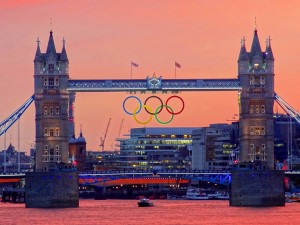 The 2012 London Olympics opened on 27 July. This has been the result of years of planning and investment in infrastructure since London won the bid in 2005.
The 2012 London Olympics opened on 27 July. This has been the result of years of planning and investment in infrastructure since London won the bid in 2005.
It is estimated that hosting the Games will have cost over £9bn. It is therefore interesting to consider the long-run impact on a host city years after the last medal has been won. We might expect host cities to achieve increased growth due to the benefits from the improved infrastructure and the impact of increased publicity and exposure on trade, capital and population.
 This has recently been investigated in a paper published in the Economic Inquiry by Stephen Billings and James Holladay which looks at the impact hosting the Games has on GDP and trade (working paper available here). One difficulty with trying to identify the impact of hosting the Games, is that only certain cities will have a chance of being chosen as hosts and these may be cities that are more likely to experience future growth. If this is the case, it would appear that the future growth was due to hosting the Games when it would in fact have been likely to occur anyway. In order to control for this, the above paper compares the winners with losing finalists in the selection process for host cities. For example under this approach London would be compared with Singapore, Moscow, New York and Madrid. In addition, subsequent matching processes are also used to select appropriate cities for comparison.
This has recently been investigated in a paper published in the Economic Inquiry by Stephen Billings and James Holladay which looks at the impact hosting the Games has on GDP and trade (working paper available here). One difficulty with trying to identify the impact of hosting the Games, is that only certain cities will have a chance of being chosen as hosts and these may be cities that are more likely to experience future growth. If this is the case, it would appear that the future growth was due to hosting the Games when it would in fact have been likely to occur anyway. In order to control for this, the above paper compares the winners with losing finalists in the selection process for host cities. For example under this approach London would be compared with Singapore, Moscow, New York and Madrid. In addition, subsequent matching processes are also used to select appropriate cities for comparison.
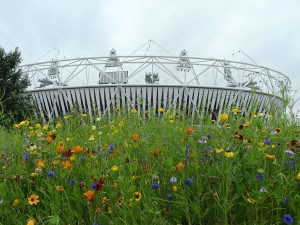 They find that larger cities in wealthier countries are more likely to be chosen to host the Games. However, once comparisons with other appropriate cities are made, overall, they find that hosting the Games has no effect on a cities population, growth or trade. One explanation provided is that the intense competition to host the Games means the potential gains are competed away via escalated promises in order to increase a cities chances of being selected. In addition, they note that there may well still be considerable specific benefits from the investments made to host the Games.
They find that larger cities in wealthier countries are more likely to be chosen to host the Games. However, once comparisons with other appropriate cities are made, overall, they find that hosting the Games has no effect on a cities population, growth or trade. One explanation provided is that the intense competition to host the Games means the potential gains are competed away via escalated promises in order to increase a cities chances of being selected. In addition, they note that there may well still be considerable specific benefits from the investments made to host the Games.
It is also clear that there are both positive and negative externalities from hosting the Games that, whilst difficult to measure, ideally should be taken into account. On the negative side, these include the extra hassle anybody travelling to work in London during the Games will face. On the other hand, on the positive side, it is hoped that part of the long-run legacy of the Games will be increased interest and participation in sport which would result in substantial health benefits.
David Cameron claims London 2012 will bring £13bn ‘gold for Britain’ The Guardian, Hélène Mulholland (05/07/12)
Olympic legacy: how the six Olympic boroughs compare for children The Guardian, Simon Rodgers (19/07/12)
London 2012: Olympics legacy hard to define BBC News, David Bond (13/07/12)
Questions
- Explain how intense competition to host the Games might result in benefits being competed away.
- Can you think of any other externalities resulting from the Olympic Games?
- Why are the impact of externalities difficult to measure?
- What other factors should be taken into account when assessing the costs and benefits of hosting the Games?
- Do you think the decision to bid to host the Games should be purely based on a cost-benefit analysis?
 The Clean Energy Bill has been on the agenda for some time and not just in the UK. With climate change an ever growing global concern, investment in other cleaner energy sources has been essential. However, when it comes to investment in wind farms, developers have faced significant opposition. The balancing act for the government appears to be generating sufficient investment in wind farms, while minimising the negative externalities.
The Clean Energy Bill has been on the agenda for some time and not just in the UK. With climate change an ever growing global concern, investment in other cleaner energy sources has been essential. However, when it comes to investment in wind farms, developers have faced significant opposition. The balancing act for the government appears to be generating sufficient investment in wind farms, while minimising the negative externalities.







